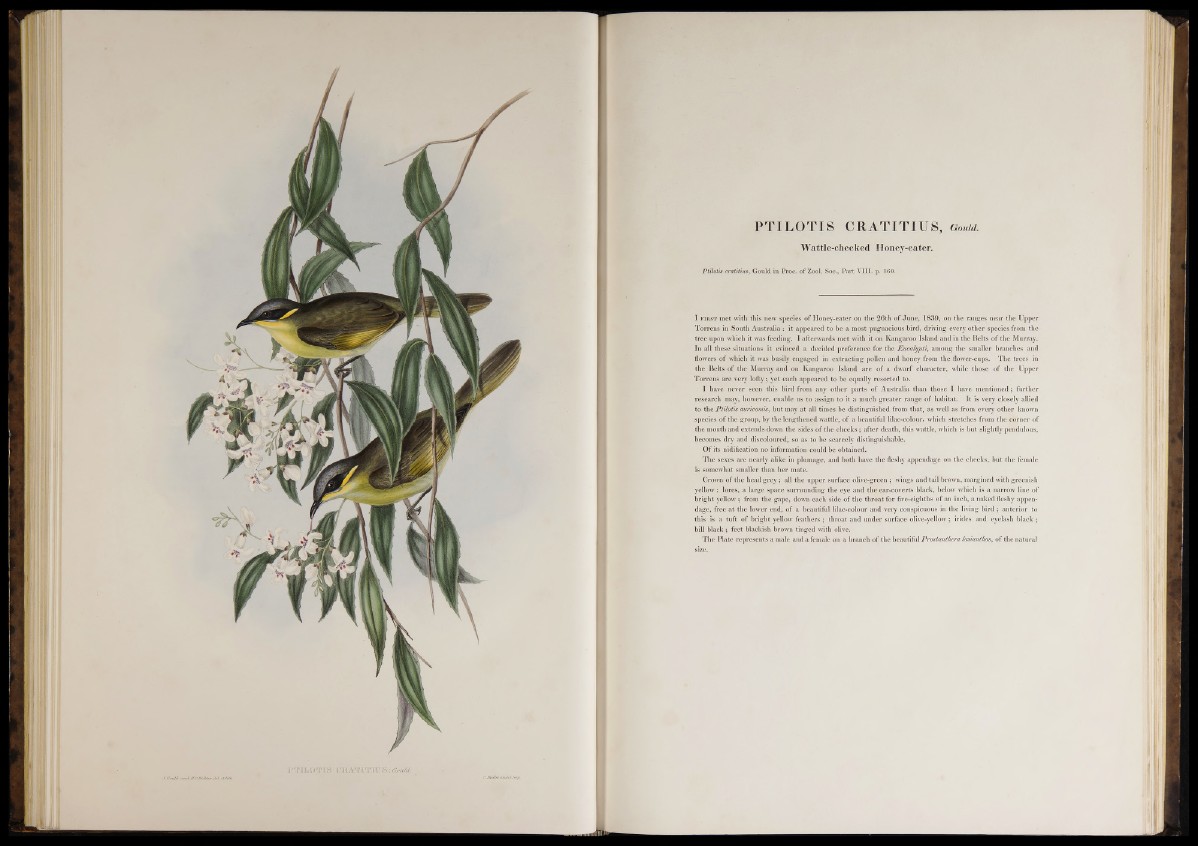
PTILOTIS CRATITIUS, Gould.
Wattle-cheeked Iloney-eater.
Ptilotis cratitius, Gould in Proc. of Zool. Sog., Part VIII. p. 160.
I f i r s t met with this new species of Honey-eater on the 26th of June, 1839, on the ranges near the Upper
Torrens in South Australia : it appeared to be a most pugnacious bird, driving every other species from the
tree upon which it was feeding. I afterwards met with it on Kangaroo Island and in the Belts of the Murray.
In all these situations it evinced a decided preference for the Eucalypti, among the smaller branches and
flowers of which it was busily engaged in extracting pollen and honey from the flower-cups. The trees in
the Belts of the Murray and on Kangaroo Island are of a dwarf character, while those of the Upper
Torrens are very lofty; yet each appeared to be equally resorted to.
I have never seen this bird from any other parts o f Australia than those I have mentioned; further
research may, however, enable us to assign to it a much greater range of habitat. It is very closely allied
to the Ptilotis auricomis, but may at all times be distinguished from that, as well as from every other known
species of the group, by the lengthened wattle, of a beautiful lilac-colour, which stretches from the corner of
the mouth and extends down the sides of the cheeks; after death, this wattle, which is but slightly pendulous,
becomes dry and discoloured, so as to be scarcely distinguishable.
Of its nidification no information could be obtained.
The sexes are nearly alike in plumage, and both have the fleshy appendage on the cheeks, but the female
is somewhat smaller than her mate.
Crown of the head grey; all the upper surface olive-green ; wings and tail brown, margined with greenish
yellow ; lores, a large space surrounding the eye and the ear-coverts black, below which is a narrow line of
bright yellow ; from the gape, down each side o f the throat for five-eighths of an inch, a naked fleshy appendage,
free at the lower end, of a beautiful lilac-colour and very conspicuous in the living bird ; anterior to
this is a tuft of bright yellow feathers ; throat and under surface olive-yellow; irides and eyelash black ;
bill black; feet blackish brown tinged with olive.
The Plate represents a male and a female on a branch of the beautiful Prostanthera lasianthos, of the natural
size.